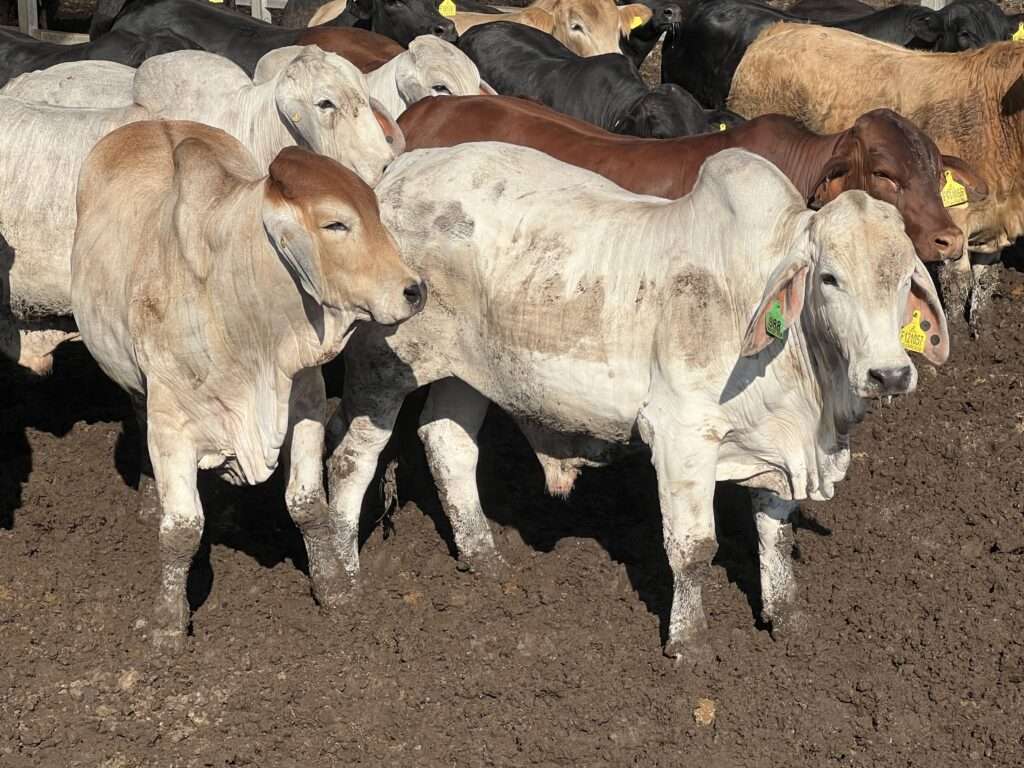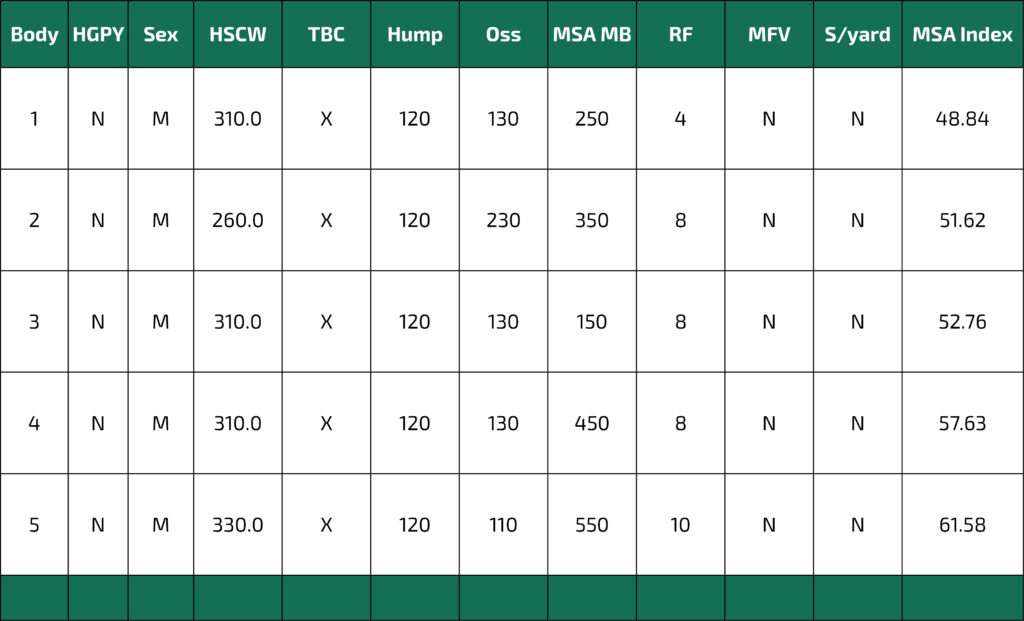By Matt Sherrington; Picture supplied
Grassfed brands have evolved to be a common part of today’s industry.
Brand names such as Right to Roam, Natures Fresh and Grasslands are all grassfed brands now adopted by the major processors.
All of these brands are Meat Standards Australia (MSA) graded and without MSA the consistency of these products would be hard to maintain.
Australian Brahman Breeders’ Association senior vice president Matthew Noakes said these indexes range from 50 to 54 for grassfed premiums and that these premiums range from 20 to 65 cents per kilogram.
“Recently a mob of Brahman steers killed on account of B.J. Thomas and Family, Varossa Brahmans, Baralaba, had a 60 per cent compliance rate for Teys Grasslands killed at Teys Biloela Meatworks,” Mr Noakes said.

“One of the lead bullocks weighed 388kg, had a hump height of 135cm, an ossification score of 170, MSA marbling of 490 (Aus-Meat 2), rib fat of 10mm, and scored 56.7pc on the MSA index,” he said.
While hump height has been criticised as a discounting tool, sensory testing involving more than 90,000 consumers and 650,000 samples has shown that there is an impact.
“Scientifically it has also been proven that Bos Indicus cattle have higher levels of calpastatin that serves to inhibit tenderness.”
Mr Noakes said by taking the time and following the grading patterns of high-content Brahman cattle, pathways have emerged that have led to better grading outcomes.
“If we were to achieve grading results similar to Varossa on today’s price grid it would deliver a premium of $130/head over a mob of bullocks weighing 360kg.
“The MSA Index calculator (table below) helps to explain the traits that affect Brahman grading.

“All cattle on this table are graded as 100pc Tropical Breed content. The 120 Hump height incurs the highest TBC score and there is only slight impact as hump height exceeds 120.”
In the table Body 1 shows the impact of hormonal growth promotants (HGPs) on the MSA grading model.
HGP also impacts ossification and rib fat.
Body 2 shows the impact of low growth and an early maturity pattern which affects ossification
Body 3 shows how heavily a low marble score impacts eating quality.
Body 4 only has a change to the marble score.
An MSA score of 450 is equivalent to an Aus-Meat marble score of 2, attainable with grassfed Brahman cattle.
Body 5 shows ultimately what is achievable with no change in hump height, with more growth added, lower ossification, higher marbling, and more rib fat.
“Knowing now that there are a number of factors affecting grading that can be managed by producers, what impacts can be related to genetics and tied in with bull selection?”
“Let’s look at the MSA traits that relate directly to information usually seen on a bull sale supplementary sheet.
“Weight is always used relative to ossification to establish carcase growth.
“All processors have minimum weights for premiums.
“Ossification is relevant to weight for age, marbling is represented by intramuscular fat scans, and rib fat is represented by ultrasound scans.”
Mr Noakes said breeding cattle is all about balance.
“Thankfully, the traits associated with breeding cattle for achieving better MSA outcomes fit in with most breeding objectives.
“There is no contradiction between breeding growthy, easy doing, and fertile cattle and those that can attract an MSA outcome.”

